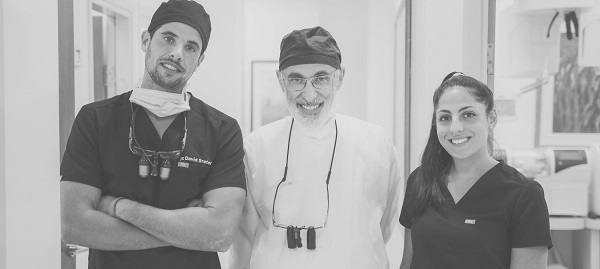
Unhealthy Practices
- Bulimia
- Grills, Grillz and Fronts
- Kicking the nicotine habit
- Meth Mouth
- Oral Piercing and Health
- Tobacco Use Cessation
- Tongue Piercing & Its Dental Effects
Share This Page
268 JADA, Vol. 138 http://jada.ada.org February 2007
FOR THE DENTAL PAT I E N T . . .
Resources to help you quit
Mark Twain once said, “Quitting smoking is easy. I’ve done it a thousand times.” Quitting use of tobacco is difficult because all forms of it— cigarettes, cigars and smokeless (spit) tobacco—contain nicotine, and nicotine is the agent in tobacco that is capable of causing addiction or dependence. However, you can quit once and for all.
RESOURCES
Here are several recognized resources that can provide the tools to help you quit using tobacco and make the transition to a healthier lifestyle.
QUITTING USE OF SMOKELESS TOBACCO
Smokeless tobacco goes by many names, such as “spit tobacco,” “dip and chew,” “snuff” or “chewing tobacco.” No matter what it is called, smokeless tobacco is highly addictive and can harm one’s health. “You Can Quit Spit Tobacco” is sponsored by the National Institute of Dental and Craniofacial Research. For more information, visit “www.nidcr.nih.gov” and enter “spit tobacco” in the search field. For more information about oral health, visit “www.ada.org”.
Prepared by the ADA Division of Communications, in cooperation with The Journal of the American Dental Association and the ADA Council on Access, Prevention and Interprofessional Relations. Unlike other portions of JADA, this page may be clipped and copied as a handout for patients, without first obtaining reprint permission from the ADA Publishing Division. Any other use, copying or distribution, whether in printed or electronic form, is strictly prohibited without prior written consent of the ADA Publishing Division.
“For the Dental Patient” provides general information on dental treatments to dental patients. It is designed to prompt discussion between dentist and patient about treatment options and does not substitute for the dentist’s professional assessment based on the individual patient’s needs and desires.
Copyright ©2007 American Dental Association. All rights reserved.
FOR THE DENTAL PAT I E N T . . .
Resources to help you quit
Mark Twain once said, “Quitting smoking is easy. I’ve done it a thousand times.” Quitting use of tobacco is difficult because all forms of it— cigarettes, cigars and smokeless (spit) tobacco—contain nicotine, and nicotine is the agent in tobacco that is capable of causing addiction or dependence. However, you can quit once and for all.
RESOURCES
Here are several recognized resources that can provide the tools to help you quit using tobacco and make the transition to a healthier lifestyle.
- 1-800-QUIT-NOW (1-800-784-8669): This tollfree number (TTY: 1-800-332-8615) is a single access point to the National Network of Tobacco Cessation Quitlines. Callers are routed automatically to a state-run quitline, if one exists in their area. If there is no state-run quitline, callers are routed to the National Cancer Institute (NCI) quitline, which provides help with quitting smoking, literature and referrals to other resources.
- “smokefree.gov”: This Web site provides information and professional assistance to help support the immediate and long-term needs of people who want to quit smoking. The site provides an online step-by-step cessation guide; local and state telephone quitlines; NCI’s national telephone quitline; NCI’s instant messaging service; and publications.
- Centers for Disease Control and Prevention (CDC), Office on Smoking and Health (OSH): 1-800-CDC-1311 (1-800-232-1311), “www.cdc.gov/tobacco”. The CDC’s OSH is the government’s lead agency on smoking control. OSH funds the distribution of booklets on smoking topics such as helping a friend or family member quit smoking, the health hazards of smoking, relapse and the effects of parental smoking on teenagers.
- NCI: The specially trained staff at NCI’s Cancer Information Service can provide smoking cessation counseling and answer questions (in English or Spanish). They can send free materials about cancer and have information about other resources and services. Call 1-800-4-CANCER (1-800-422-6237) (TTY: 1-800-332-8815) to be connected with the office that serves your area. Or visit the NCI Web site at “www.cancer.gov”.
- American Cancer Society: 1-800-ACS-2345 (1-800-227-2345), “www.cancer.org”. Check your telephone book to find your local office.
- “You Can Quit Smoking”: For a free copy of this brochure, call any of the following: Agency for Healthcare Research and Quality (1-800-358- 9295), CDC (1-800-CDC-1311), NCI (1-800-4- CANCER). More information about quitting is available at the surgeon general’s Web site (“www. surgeongeneral.gov/tobacco”).
- American Legacy Foundation: The foundation has two goals that guide its work toward creating tobacco-free generations: to arm all young people with the knowledge and tools to reject tobacco use, and to eliminate disparities in access to tobacco use prevention and cessation services. The foundation’s Great Start program is the first national media campaign and toll-free quitline to help pregnant women quit smoking. Free, confidential counseling is available in English and Spanish by calling 1-866-66-START (“www.americanlegacy.org”).
- American Lung Association: 1-800-586-4872 or 1-212-315-8700 (“www.lungusa.org”).
QUITTING USE OF SMOKELESS TOBACCO
Smokeless tobacco goes by many names, such as “spit tobacco,” “dip and chew,” “snuff” or “chewing tobacco.” No matter what it is called, smokeless tobacco is highly addictive and can harm one’s health. “You Can Quit Spit Tobacco” is sponsored by the National Institute of Dental and Craniofacial Research. For more information, visit “www.nidcr.nih.gov” and enter “spit tobacco” in the search field. For more information about oral health, visit “www.ada.org”.
Prepared by the ADA Division of Communications, in cooperation with The Journal of the American Dental Association and the ADA Council on Access, Prevention and Interprofessional Relations. Unlike other portions of JADA, this page may be clipped and copied as a handout for patients, without first obtaining reprint permission from the ADA Publishing Division. Any other use, copying or distribution, whether in printed or electronic form, is strictly prohibited without prior written consent of the ADA Publishing Division.
“For the Dental Patient” provides general information on dental treatments to dental patients. It is designed to prompt discussion between dentist and patient about treatment options and does not substitute for the dentist’s professional assessment based on the individual patient’s needs and desires.
Copyright ©2007 American Dental Association. All rights reserved.


